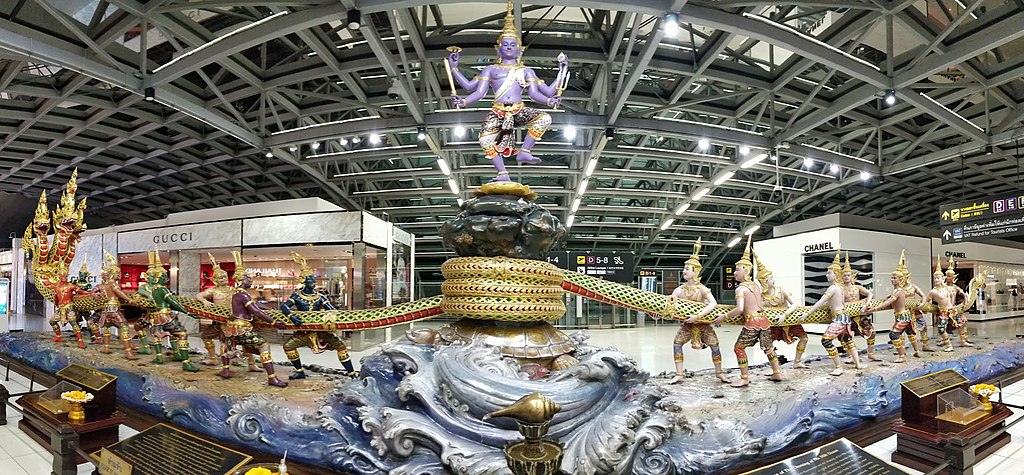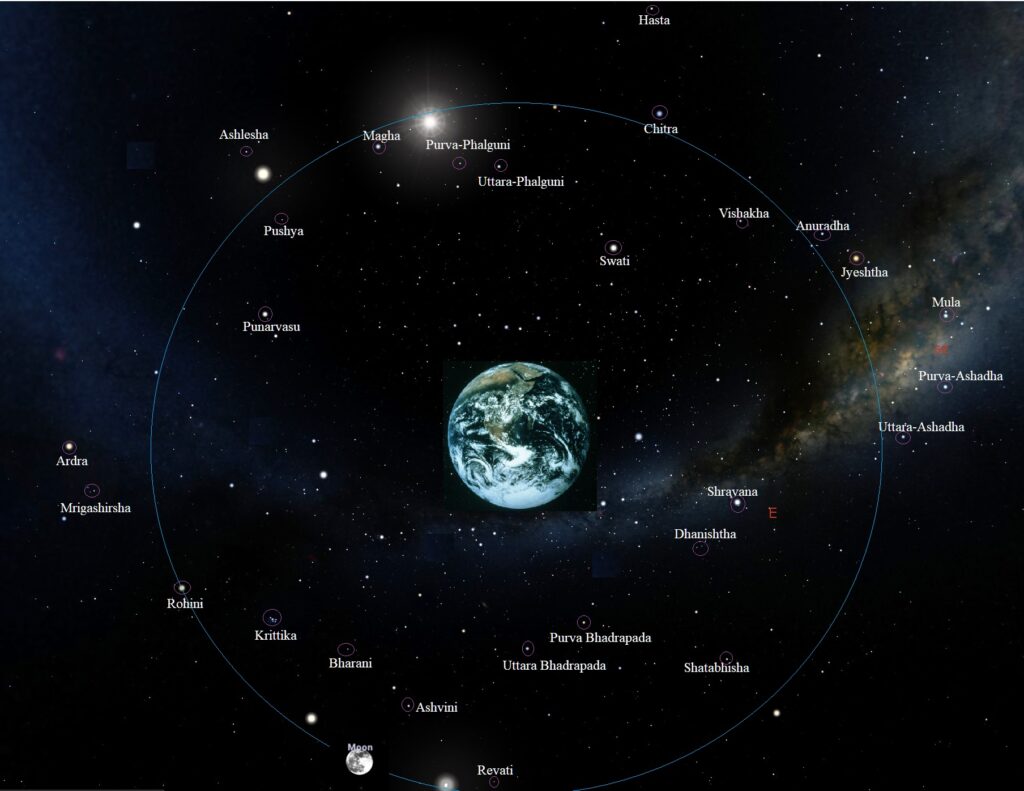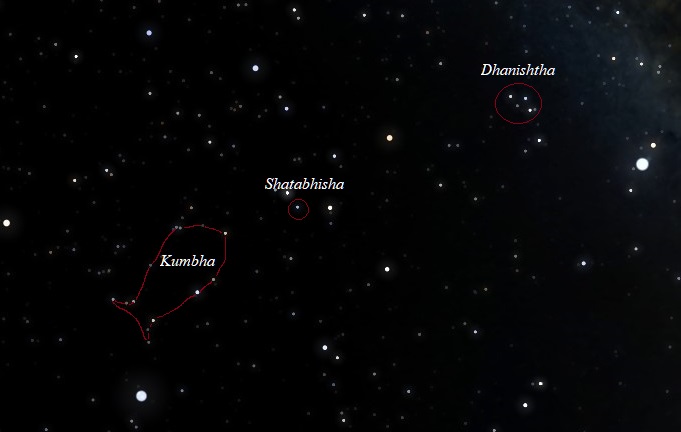Vishnu and His Avatars
In Hinduism, Brahma (ब्रह्मा) is the Creator, Vishnu (विष्णु) is the Preserver, and Shiva (शिव) is the Destroyer. The common belief is that whenever creation becomes corrupted, and evil threatens to overwhelm good in the battle between good and evil, Vishnu the Preserver incarnates in the material realm to restore morality and balance.
This descent of God to the material realm is called avatar (अवतार, popularly translated as “incarnation,” the word literally means “descent”). There are many avatars of Vishnu, but ten of them are well known – Matsya (मत्स्य, the Fish), Kurma (कूर्म, the Tortoise), Varaha (वराह, the Boar), Narasimha (नरसिंह, the Man-Lion), Vamana (वामन, the Dwarf), Parashurama (परशुराम), Rama (राम), Krishna (कृष्ण), Buddha (बुद्ध), and Kalki (कल्कि).
There are stories associated with each of the ten avatars (दशावतार), the most famous ones being the Ramayana (Rama avatar) and the Mahabharata (Krishna avatar).
The Ramayana (रामायण) and Mahabharata (महाभारत) are grand epics, and some of the world’s finest literature ever to have been written. The life of the Buddha, of course, is quite well documented. Meanwhile Kalki is thought to be a future avatar, yet to come.
The stories of some of the earlier avatars, however, are sketchier. Many of the details of these extremely ancient stories have been obscured or corrupted by time, and in many cases, their context has been lost. This brings out the detective in me, because I think these stories hide tantalizing clues waiting to be deciphered.
In this post, I want to take up Vishnu’s Kurma avatar (कूर्मावतार) for investigation. The story of this avatar also goes by the name of Samudra Manthan (समुद्र मंथन, i.e., “churning of the ocean”) or Kshira Sagara Manthan (क्षीरसागर मंथन, i.e., “churning of the milky ocean”) and is widely popular, not just in India but also in Southeast Asia.

Large parts of the Kurma avatar story may have been lost or corrupted over the course of time, but what remains has a lot of astronomical imagery, making one wonder what the full original story may have been and what fascinating nuggets of ancient astronomical knowledge it may have contained.
What are Devas and Asuras
A fixed theme in most Vedic and Puranic stories is that the Devas (देव, Gods) and the Asuras (असुर, Anti-Gods) are in a constant battle, and in the end, the Devas always win. The Kurma avatar story is no different.
But before we dive into its specifics, let us briefly consider who or what the Devas and Asuras may represent.
The word deva (देव) in Sanskrit is related to words like divya (दिव्य) and dyu (द्यु), and their meanings all have to do with light. A synonym for deva is sura (सुर), which is related to surya (सूर्य, the Sun), which also has to do with light. So, it seems obvious that the Devas are illumined beings. This could be either literal (i.e., illuminated) or metaphorical (to mean enlightened or good).
Opposite the Devas are the Asuras (असुर), literally a+sura (अ+सुर). This, again, could be taken either literally (not illuminated) or metaphorically (to mean ignorant or evil).
For the purpose of the Kurma avatar story, let us take the literal meaning of Deva and Asura. In other words, view the Devas as the illuminated objects in the night sky, and the Asuras as the dark matter in between.
Kurma Avatar Story
The story goes that the Asuras had become very powerful, and the Devas were losing all the battles. They pleaded with Vishnu to help them regain their might and influence. Vishnu suggested they churn the “milky ocean” (क्षीरसागर) to obtain amrit (अमृत, the nectar of immortality).
However, as it was impossible for the Devas to churn the ocean by themselves, Vishnu proposed they take the help of the Asuras too.
The Devas and Asuras set about churning the ocean. They used the mountain Mandara (मन्दर पर्वत) as their churning rod and Vaasuki (वासुकि, the king of Serpents, typically seen coiled around Shiva’s neck) as the churning rope. As they churned, they found that Mandara kept sinking into the ocean. To solve the problem, Vishnu took the shape of a tortoise (Kurma, कूर्म) and positioned himself under the mountain, as a solid base for it.
As the Devas and Asuras churned, several things happened in sequence. First, a deadly poison called halahala (हलाहल) – described in the ancient texts as a blueish-black and fierily blazing toxin – emerged. The Devas and Asuras began to drop dead like flies after breathing it in.
They ran to Shiva begging for help, and in his great compassion, Shiva sucked in and held it in his throat. As a result, he got a blue-colored throat, which earned him the name Neelakantha (नीलकण्ठ, the Blue-Throated One).
The churning resumed, and this time, treasures (रत्न, ratna) began to emerge from the ocean one by one. There are 9, 14, or more treasures listed in various versions of the story, but the most important treasure to emerge was, of course, a pitcher of amrit (the nectar of immortality), borne by Dhanvantari (धन्वन्तरि, the heavenly physician).
The Devas and Asuras started fighting over the amrit, but Vishnu disguised himself as Mohini (मोहिनी, an enchantress) and convinced everyone to line up and wait their turn. Mohini then took the pitcher and started distributing the amrit, starting with the Devas.
The Asuras impatiently waited their turn, but one of them, Swarbhanu (स्वर्भानु), disguised himself as a Deva and sat between Surya (सूर्य, the Sun God) and Chanra (चन्द्र, the Moon God). Even as Vishnu gave Swarbhanu a portion of amrit, Surya and Chandra noticed the imposter and alerted Vishnu, who took swift action by beheading Swarbhanu.
But alas, it was too late. Swarbhanu had already swallowed the amrit and become immortal. However, his head and body having been severed by Vishnu, they became separate entities called Rahu (राहु) and Ketu (केतु). Ever since, Rahu and Ketu have chased Surya and Chandra around the sky, trying to gobble them up.
There are many other fascinating details to the story that are easily available online. In this post, I have focused on the portions I want to discuss for their astronomical symbolism.
Astronomical Symbolism
Churning of the Milky Ocean
If we consider the Devas to be the illuminated objects (stars) and the Asuras to be the un-illuminated objects (dark matter) in the sky, visualizing a churning of the two suggests a spiral galaxy – more specifically, our own galaxy, the Milky Way.
Halahala
The toxic, blue-black fiery fumes are extremely reminiscent of the fiery toxic gases in space, which are produced in the process of the birth and death of stars and galaxies. Shiva’s sucking in and swallowing of the poison reminds me of the black hole at the center of our galaxy.
Dhanvantari and the Pitcher of Amrit
Before explaining the astronomical significance of Dhanvantari and the pitcher of amrit, I want to briefly explain constellations and asterisms.
Constellations and asterisms are stars or groups of stars in recognizable patterns in our night sky. There are billions of trillions of stars in the sky, but some of them stand out because they are bigger and brighter. Sometimes these stars form interesting patterns that are recognizable.
Ancient people used these recognizable patterns of stars in the sky (which remain unchanging over thousands of years) as reference points against which to chart the movement of objects that are closer to us (the Sun, the Moon, Mercury, Venus, Mars, Jupiter, Saturn, etc.), and which therefore have visible movements across the sky from our perspective on Earth.
For instance, there are 12 zodiac constellations (राशि, rashi) to mark the path of the Sun around the Earth (the Sun transits through one rashi per month), and there are 27 nakshatra (नक्षत्र, asterisms) to mark the path of the Moon around the Earth (it takes 27 days for the moon to orbit the Earth, so it transits through one nakshatra per day).
While the rashi (zodiac) are larger constellations, spanning roughly 30 degrees in space each (30 degrees x 12 zodiacs = 360 degrees, i.e., full circle), the nakshatra on average span 13.33 degrees each (13.33 degrees x 27 nakshatras = 360 degrees).
Nakshatras are either single stars or smaller constellations within rashis, and on average there are 2.25 nakshatras per rashi. Sometimes a nakshatra can fall in two different rashis, half in one, half in the next.

Of the 27 nakshatras, two are Dhanishta (धनिष्ठा, literal meaning: “very wealthy”) and Shatabhisha (शतभिष, literal meaning: “a hundred physicians”). Both Dhanishta and Shatabhisha fall in the Kumbha rashi (literal meaning: “constellation of the pitcher,” equivalent to Aquarius).
If you follow the path of the Moon, Dhanishtha comes first, Shatabhisha is next, followed by the pitcher (note that the pitcher itself is only one part of the constellation, the area of the constellation extends to include the nakshatras Dhanishtha, Shatabhisha, and Purva-Bhadrapada).

Are we going to pretend this has nothing to do with Dhanvantari (the heavenly physician) bringing up the pitcher of amrit?
Rahu and Ketu
The story of Rahu and Ketu describes eclipses as the ancient Indians understood it. Through their observation of the skies, they could see that the Sun and the Moon were obscured by something periodically. They assumed it was an un-illuminated object (i.e., an Asura) that moved around in the skies similar to the other planetary objects (the Sun, Moon, Mercury, Venus, Mars, Jupiter, Saturn) that can be observed from earth.
Based on their understanding of the movements of the other (illuminated) objects, they extrapolated and charted the movements of the invisible Rahu and Ketu too, and they used this to predict the timing of eclipses.
Vague Conclusion
Based on the portions of the Kurma avatar story I have described above, I am tempted to think that Samudra Manthan is a story about the birth of our galaxy and its various parts. Many of the other treasures that emerged from the milky ocean may also be referencing nakshatras or other objects in the night sky, but the connections are not clear enough for me to put them down here.
I will continue to think about this and add to my post if I find any more striking connections. But perhaps some of my readers would also be encouraged to do their own research along these lines. If you have any insights you’d like to share with me, please leave a comment below!
Leave a Reply